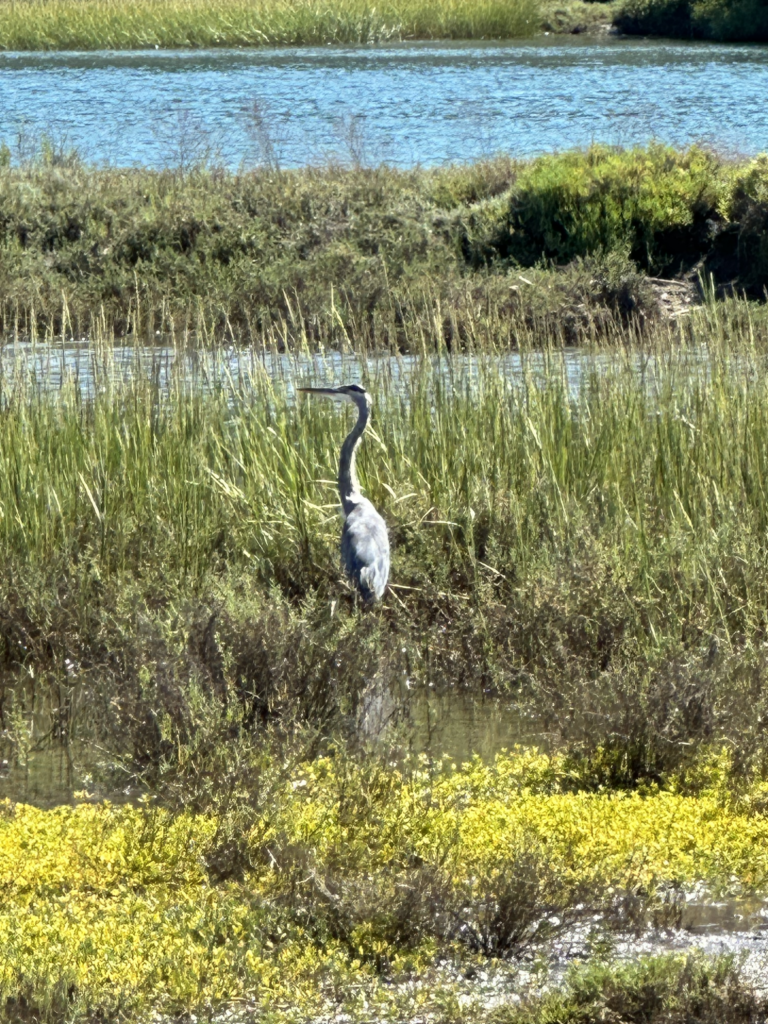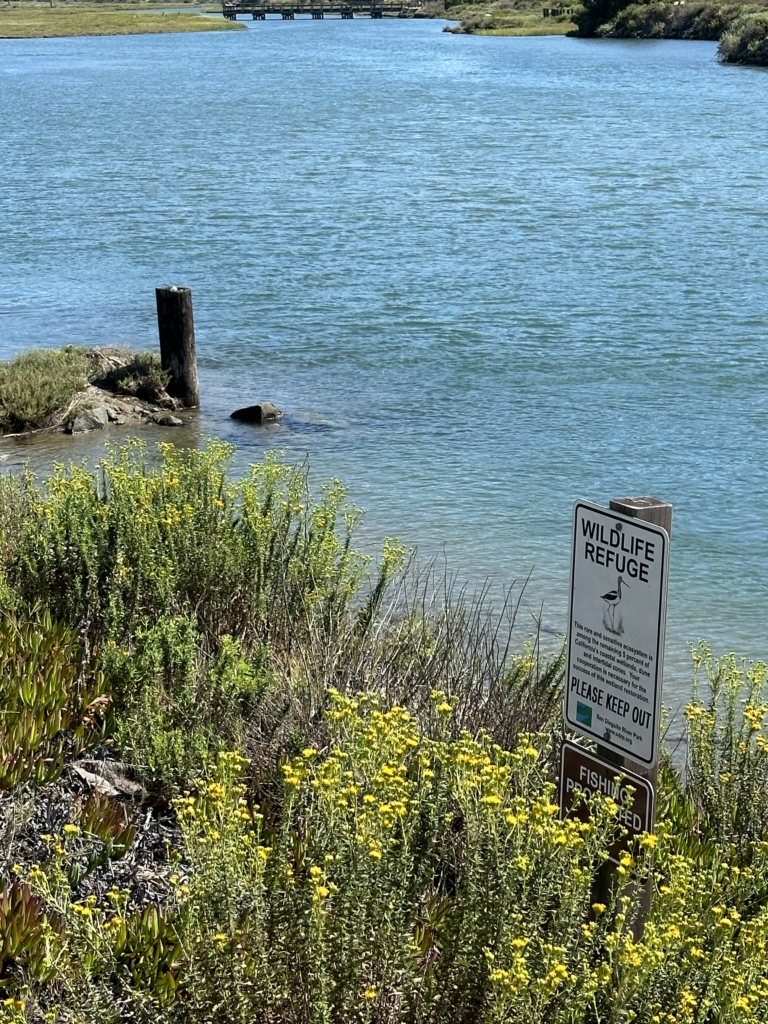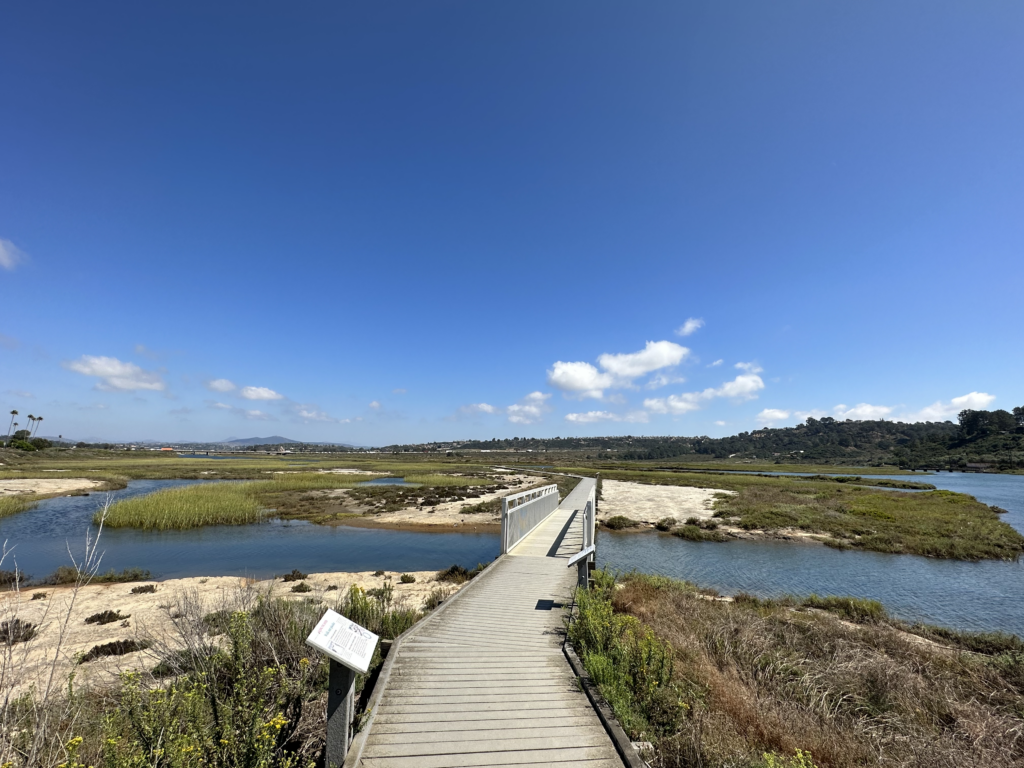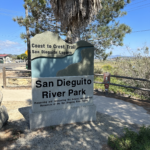San Dieguito River Estuary and Lagoon
The San Dieguito River Watershed starts at Volcan Mountain near Julian and stretches 55 miles through portions of Julian, Wynola, Santa Ysabel, Ramona, Poway, Rancho Bernardo, Escondido, Del Dios, Santa Fe Valley, Rancho Santa Fe, Fairbanks Ranch, San Diego and Del Mar through the San Dieguito Lagoon to the Pacific Ocean. The San Dieguito River Watershed Management Area encompasses approximately 345 square miles.
In terms of land area, the majority of the watershed is within the unincorporated area of San Diego County. The San Dieguito River Watershed is presently divided into vacant/undeveloped land, parks/open space, and urban land uses. Nearly half of the vacant land area is open to future development, most of which is zoned for residential use.
There are several important natural areas within the watershed that sustain a number of threatened and endangered species. Among these are the 92,000-acre San Dieguito River Park Focused Planning Area and the 150-acre San Dieguito Lagoon. The San Dieguito River Watershed supplies area residents with potable water from five water storage reservoirs including Lake Hodges, Lake Sutherland, and Lake Poway.
The San Dieguito Lagoon was once the largest of the six San Diego coastal lagoons and has the largest watershed. The marsh area alone is believed to have been over 600 acres, while the entire lagoon probably covered about 1,000 acres. Over the years, the lagoon was subjected to major filling activities and lost over half of its marshes as a result of development projects including Highway 101, Jimmy Durante Boulevard, residential housing, the Del Mar Fairgrounds and a World War II airport. Two large dams were constructed upstream on the San Dieguito River, greatly reducing freshwater inflows. The result of all these activities was the year-round closure of the lagoon mouth beginning in the 1940s. Only large winter floods or bulldozers opened the mouth periodically.



The lagoon still has vital importance for the ecology of the region – for birds as a stop on the Pacific Flyway, as nesting and foraging areas for endangered species, and as a fish hatchery. Restoration of the San Dieguito coastal wetlands has been a stated goal of the Cities of Del Mar and San Diego, and the organizers of the San Dieguito River Park for almost two decades. In 1983, the California Department of Fish and Game created a tidal basin in a 70-acre area of the southern lagoon funded in part by a $1.3 million grant from the California Coastal Conservancy. In addition, the lagoon mouth was reopened, restoring tidal influence, at least temporarily, to the entire coastal wetland. The ultimate restoration goal is to restore what remains of the historically significant San Dieguito Lagoon system.
The California Coastal Commission required Southern California Edison Company, the owner and operator of the San Onofre Nuclear Generating Station to create or substantially restore at least 150 acres of wetlands in Southern California as mitigation for the impacts of the power station. This $93 million project completed in 2010, preserves, improves, and creates a variety of habitats to increase and maintain fish and wildlife and ensure the protection of endangered species. Project objectives are that the wetland project design ensures adequate tidal and riverine flushing and circulation to support a diversity of biological resources while maintaining the appearance of a natural wetland ecosystem.
Habitats restored include non-tidal wetlands such as riparian scrub and freshwater marsh, coastal sage scrub, native grasslands, chaparral, and salt marsh transition. In addition, there are several ongoing projects to remove invasive, non-native species from the surrounding wetland areas, restore historic riparian corridors, and create habitat for threatened and endangered wildlife.
The San Dieguito Lagoon Ecological Reserve is a 110-acre property within the restoration area that provides critical migrating waterfowl habitat and nesting sites for sensitive bird species, contributes to coastal fisheries replenishment by providing nursery habitat for young fish, and generally protects a tremendous diversity of plant and animal species. Habitats include southern California coastal sage scrub, riparian, and coastal wetland communities. Part of the Reserve is also designated as a State Marine Conservation Area. Some ocean fish, such as topsmelt, California halibut, and striped mullet use the tidal wetlands as a nursery, and the salt marsh provides nesting areas for birds like the California least tern.
Wetland Expansion Potential
Wetland Migration
There is a lot of potential for wetland expansion in the historic lagoon area. The completed restoration work included transition areas that will allow landward migration of wetlands. Current restoration planned in the eastern part of the lagoon will add to that potential. There are some additional opportunities further east on properties that will be impacted by sea level rise, including the horse park and a golf course where there is very little development to block wetland expansion.

San Dieguito Lagoon Wetland Restoration Project Phase II
SANDAG and Caltrans, along with the San Dieguito River Park Joint Powers Authority (SDRPJPA) as a partner agency, are pursuing a project to restore land in the San Dieguito River Valley. The San Dieguito Lagoon Restoration Project Phase II will convert former agricultural fields to saltwater wetlands and enhance and maintain the natural flood control channel. This project acquired 75 acres within the floodplain of the San Dieguito River, located east of and immediately adjacent to the 400-acre San Dieguito Wetland Restoration Project. The property has been partially designated as a Multiple Habitat Plan Area (MHPA) in the City of San Diego Multiple Species Conservation Program (MSCP)
The San Dieguito Lagoon will benefit from this major restoration project planned for the eastern end of the lagoon from east of Interstate 5 to El Camino Real. The project will establish a system with approximately 64 acres of restored tidal wetland and 15 acres of brackish wetland, as well as create and/or enhance approximately 5 acres of riparian habitat. Other areas will be established as transitional areas and native uplands.
At the western end of the lagoon, the situation is more complicated. A mix of public and private ownership and various levels of development makes responding to sea level rise a more difficult process. The highest potential is on parcels that are in public ownership, relatively undeveloped, and impacted by small amounts of sea level rise. Examples include the East Overflow Parking Lot at the Fairgrounds, the Del Mar Public Works Yard, and the undeveloped area south of the yard.
Public Access
Recreation
The San Dieguito Lagoon is the “gateway” to the San Dieguito River Park. The San Dieguito coastal area is also a significant scenic resource for residents and visitors in Solana Beach, Del Mar, and San Diego.
Public access, including the Coast to Crest Trail and use areas, such as the Birdwing Open Air Classroom, are sited in a manner that does not interfere with the naturally functioning ecosystem or the open space character of the western San Dieguito River Valley.
Points of interest include the Grand Avenue Bridge, the Lagoon Boardwalk Trail, and the Coast to Crest Trail.
Within the MPA, Recreational take of finfish by hook-and-line from shore is allowed. Boating, swimming, wading, and diving are prohibited. Closed from 8 p.m. to 5 a.m.
Transit
The Coastal end of the Coast To Crest Trail is about 1 block from a 101 Bus stop at Camino Del Mar and 29th Street. The 101 Bus connects to the Coaster and Amtrak at the Solana Beach Train Station.
A 308 bus stop at 2705 Via De La Valle provides access to several points on the Coast to Crest Trail East of I-5. The 308 bus connects to the 101 bus, Coaster, and Amtrak at the Solana Beach train station, and to the Sprinter and multiple bus routes at the Escondido Transit Center.

Trails
Coastal Trails include:
- River Path Del Mar
- Crest Canyon Trail
- Coast to Crest Trail – Coastal section
- Dust Devil Nature Trail
Trails coming in 2023 and 2024 include:
- Coast To Crest Trail – Surf Cup and Osuna sections
- A new trail that will improve connectivity from Dust Devil Nature Trail to the Coast To Crest Trail
More information on trails: